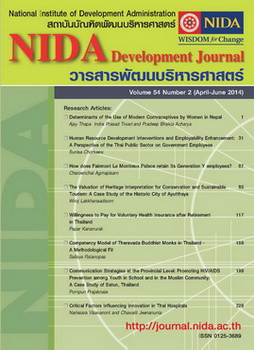Determinants of the Use of Modern Contraceptives by Women in Nepal
DOI:
https://doi.org/10.14456/ndj.2014.24Keywords:
Modern contraceptives, Contraceptive prevalence, NepalAbstract
This study, using the data from Nepal Demographic and Health Survey 2006, has run a logistic regression model to identify the determinants of the use of modern contraceptives by women in Nepal. The study has found that women’s age, religion, social group (caste/ethnicity), the husband’s occupation, total number of children, the decision maker regarding the use of contraceptives, the frequency of talking to the husband about family planning, the husband’s approval in using contraceptives, and the role in the final decisions on health-related issues of women have a significant association with the use of modern contraceptives by currently-married women in Nepal. However, other likely factors such as place of residence, women’s literacy, the husband’s education, wealth index, the working status of women, the women’s occupation, the earning level of women, fertility preference, the desire of children, and the media were not found to have such a significant relationship. The study concludes that the difficulty in achieving the target of contraceptive prevalence rate and controlling population growth in Nepal is largely due to social, psychological and behavioral factors, and the failure of the effectiveness of the education, awareness, and knowledge-related factors. Policy makers should take these factors into account in creating policies related to contraceptive prevalence and population control in the country.Downloads
Published
21-04-2014
How to Cite
Thapa, A., Tiwari, I. P., & Acharya, P. B. (2014). Determinants of the Use of Modern Contraceptives by Women in Nepal. NIDA Development Journal, 54(2), 1–29. https://doi.org/10.14456/ndj.2014.24





